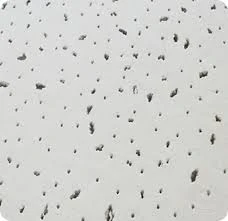10 月 . 18, 2024 18:11 Back to list
Comparing Gypsum Board and PVC Ceilings for Your Home Renovation Needs
Gypsum Board vs. PVC Ceiling Choosing the Right Option for Your Space
When it comes to interior design and construction, the choice of ceiling materials can significantly influence the aesthetics, durability, and maintenance of a space. Two popular options that homeowners and builders often consider are gypsum board and PVC ceiling panels. Each material has its unique properties, advantages, and disadvantages, making the selection process crucial. This article will explore the characteristics of gypsum board and PVC ceilings, helping you make an informed choice for your project.
Gypsum Board Features and Benefits
Gypsum board, commonly known as drywall or plasterboard, is a widely used construction material made from a gypsum core sandwiched between two sheets of heavy paper. It is renowned for its fire resistance, soundproofing qualities, and smooth finish. When installed correctly, gypsum board can create a seamless appearance, making it an excellent choice for interior spaces, including homes, offices, and commercial buildings.
One of the significant benefits of gypsum board is its fire-resistant properties. Gypsum contains water molecules that, when exposed to high temperatures, evaporate and help slow down the spread of flames. This makes it a safer choice for ceiling applications in areas where fire codes are strict.
Moreover, gypsum board is easy to finish. It can be painted, wallpapered, or textured, allowing for flexibility in design. It also provides excellent sound insulation, reducing noise between rooms, which is particularly desirable in multi-family units or offices.
However, gypsum board has its drawbacks. It is susceptible to moisture and humidity, which can lead to mold growth and structural damage. Consequently, it may not be suitable for areas with high humidity, such as bathrooms or basements unless specially treated.
PVC Ceiling Panels Features and Benefits
gypsum board vs pvc ceiling

PVC (polyvinyl chloride) ceiling panels, on the other hand, offer a modern alternative to traditional ceiling materials. Lightweight and waterproof, these panels are made from plastic, making them resistant to moisture, stains, and fading. Their versatility is remarkable, as they come in various colors, patterns, and finishes, allowing designers to achieve diverse aesthetics.
One of the most notable advantages of PVC ceilings is their resistance to water and humidity. This makes them ideal for environments such as kitchens, bathrooms, and laundries, where moisture is prevalent. They do not warp, swell, or decay when exposed to water, ensuring a long-lasting beautiful appearance.
Another benefit of PVC ceilings is their ease of installation. These panels can be installed quickly, often fitting directly over existing ceilings without the need for extensive preparation. Moreover, they are lightweight, reducing the overall strain on ceiling structures.
However, PVC ceilings may not offer the same degree of soundproofing as gypsum board. While they can dampen sound to some extent, they may not be as effective in noise reduction compared to traditional drywall. Additionally, the long-term environmental impact of PVC production and disposal has raised concerns among environmentally conscious consumers.
Conclusion Which to Choose?
Ultimately, the choice between gypsum board and PVC ceiling panels depends on your specific needs and preferences. If you prioritize fire resistance, soundproofing, and a finish that can be customized extensively, gypsum board may be the way to go. However, if moisture resistance, ease of installation, and a wide variety of design options are more critical for your space, then PVC ceiling panels could be the better choice.
Consider the environment of your project, budget constraints, and long-term expectations before making a decision. Both materials have their unique qualities that can enhance your space in different ways. By understanding the advantages and disadvantages of each option, you can select the ceiling material that best fits your lifestyle and design vision.
-
Revolutionizing Interior Design with Ceilings t grid Suspended SystemNewsOct.29,2024
-
Revolutionizing Ceiling Design with ceiling access panel with Gypsum Tile WaterproofNewsOct.29,2024
-
Revolutionizing Interior Design with PVC Gypsum Ceiling: A Comprehensive GuideNewsOct.29,2024
-
Elevating Interior Design with High quality Mineral Fiber Ceiling TilesNewsOct.29,2024
-
Revolutionizing Interior Design with PVC Gypsum Ceiling: A Comprehensive GuideNewsOct.29,2024
-
Elevating Interior Design with High-Quality Mineral Fiber Ceiling Tiles: A Comprehensive GuideNewsOct.29,2024







